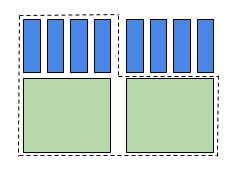Translations:Allocations and compute scheduling/20/en: Difference between revisions
Jump to navigation
Jump to search
m (FuzzyBot moved page Translations:Scheduling resources and allocations/20/en to Translations:Allocations and resource scheduling/20/en without leaving a redirect: Part of translatable page "Scheduling resources and allocations") |
m (FuzzyBot moved page Translations:Allocations and resource scheduling/20/en to Translations:Allocations and compute scheduling/20/en without leaving a redirect: Part of translatable page "Allocations and resource scheduling") |
Revision as of 13:41, 10 September 2021
Research groups are charged for the maximum number of core equivalents they take from the resources. Assuming a core equivalent of 1 core and 4GB of memory:
- Research groups using more cores than memory (above the 1 core/4GB memory ratio), will be charged by cores. For example, a research group requesting two cores and 2GB per core for a total of 4 GB of memory. The request requires 2 core equivalents worth of cores but only one bundle for memory. This job request will be counted as 2 core equivalents when priority is calculated. See Figure 2.
